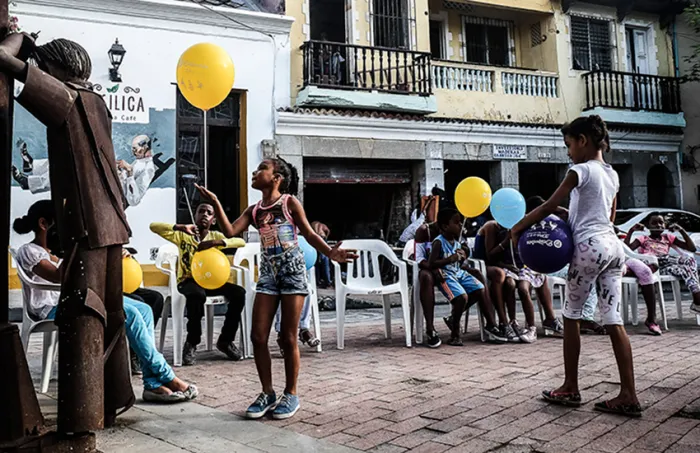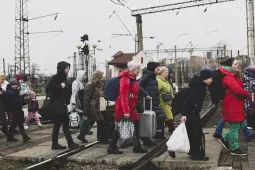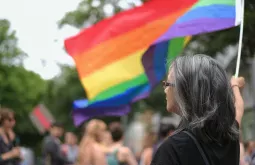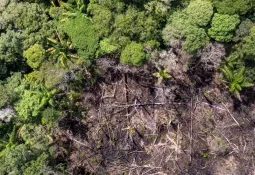Flailing

It’s all a bit of a blur, but if I die, I would like to be laid to rest, somewhere in Kazanchis. Where I was born in the late 1970s. I was wide awake and, quite vigilant. It was just after lunchtime. Yosef had gone to get my mother from the clinic, in Filwoha. That year, Mengistu’s bloody Derg regime was forcing people across Addis into a miserable life of comradery, in identical navy blue uniforms. Yosef was my cousin. He was eleven years older than me. I looked up to him. I remember watching him hide above the ceiling at my aunt’s house. That’s the only way he could avoid being carted off to do military service. His limp was so obvious. It made him look as though he was always walking the merengue. The Derg couldn’t care less. Young boys roaming the streets simply got shoved into the back of green army trucks as their mothers wailed, in horror. During the Red Terror, it was either that, or being left to rot in the gutter. Dead or alive. Like China under Chairman Mao. Mengistu admired everything about Mao. So in 1974, he put an end to Emperor Haile Selassie and, the rich Amharas, bursting the largely fair-skinned feudal bubble of the ‘Habesha’. He had grown up dark, broad and poor. In their eyes, he could probably pass for ‘baria’, a slave. My family sometimes called me baricho, sweet little slave, since I was the darkest of all the cousins on my mother’s side. It all made perfect sense. Mengistu was neither rich nor fully ‘Habesha’. And so, just like his name, he ruled, hard and from the gutter.
Until 1982, when my mum and dad had lumbered me with the schlepp of exile, Addis really was my Home. We were not Amhara but Tigrigna. We could get killed, left to rot in a roadside ditch, for daring to imagine Eritrea. The schlepp of being Tigrigna, was and still is, a lot to carry. My parents lied to me. They said we were going to see Berrezaf, my mother’s mother in Asmara. She rarely smiled. She only spoke to tell me off for not sitting up straight with my legs crossed. War had gripped Mendefera and Adi Quala: a sleepy merchant town and, a remote fertile village, that hid behind a long thick dirt road. Until 2006, the mud path to my father’s village was a swamp of silt, passable only on foot. Meanwhile, in 1982, all three of us: me, my mother and father landed in Kuwait City. I was five, she was 30 and he was 35. Often, I felt as though a giant turbo engined hair dryer was blowing hot air in my face, at full speed. That’s how hot it was, every single day. Some of the women I saw when we first arrived in Kuwait waddled like distant ghostly shadows. They wore long black abayas that fluttered, from head to toe. Tall, lean, and scary, they were like dark silhoettes roaming in outerspace. I thought they were looking for homesick five year-old girls like me, to kidnap in the lone desert streets of Salmiya.
That’s where we first lived, in a block of flats called ‘Green Building’ right across the street from the beach’s blue tongue, along the Gulf sea. We didn’t get to Eritrea until 1985, to bury my grandmother, who’d died, suddenly, of sadness. At the funeral, I thought everyone had gone mad. So I started sobbing so that they would stop acting crazy. It was so terrifying. All the women around me were covered in sheer black, and, white veils: beating their chests and howling, for Berrezaf, in the same torrid Tigrigna lovesong for the dead.
Cartagena’s old town looks oddly majestic. It sways, in slow motion, like a lopsided medieval paradise. At night, people sweat, sing and salsa to Champeta. MCs from the outskirts spin a thumping blend of mild reggae, zuk and, dancehall to young hipsters crammed into the gutted buildings of Getsameni. All around this rickety walled city, only the shoreline feels certain. It’s flat, blue and steady. I drove past it in a ‘cab’ last Sunday, on my way to the hotel. His bright blue ‘Aloha ‘shirt said it all. It had sunshine and palm trees scrawled across it. Hernando, my taxi driver, had a fairytale warmth about him. He was also a tour guide. He made sightseeing seem so easy. ‘Black is beautiful’, he kept telling me, ‘ser Negro es hermoso’, as we drove past billboards of handsome ‘Black’ couples, smiling at every other bus stop. As soon as I got to the hotel, the cab fare had shot up by 5,000 pesos. Hernando was short of change that day but we could always go sightseeing some other time. He said, casually.
I kept thinking I had been here before, to this place where cab rides were always sketchy, and Costeno Spanish sounded strangely familiar. It rolled off the tongue a lot smoother than in Lima. It was slow, round and slippery. I thought I had stepped back in time, after 15 years away from Peru; in the same body but a different soul. I was no longer a sponge. I didn’t need to absorb everyone else. I had culled anything that could rattle the real me: the shame and, all those chameleons. Over the next few days, I found myself gawking at portable sweet stalls that lined the dark cloisters along the square opposite my hotel. They looked like makeshift homes that would never really go away. I cringed at the stench of puddles the day after torrential rain. Like round sheets of faint silver mylar, they glistened on the surface of narrow cobbled streets. The smell was not quite as rancid as Lima in 1999, where, if the wind blew the other way, the entire city would reek of putrid fish, all day long.
Walking alone at night in Cartagena, I thought everyone would surround me with their eyes wide open. Staring. Just like they did in Jacmel and Santo Domingo a few years ago. I didn’t spot one, but I kept wondering: unless I wore loose clothing, could I pass for a young morena call girl? I was told there were plenty of them hanging around in the square outside my balcony at night. All the young Cachasos I met here were besotted with the idea of Africa and its Black core, as though it were a part of who they might have been, had they not grown up privileged and distant, up in the cool mountains of Bogota. It was more love than fetish. I could let down my guard. These weren’t the loathsome Pitucos of Lima, who scrawled swastika signs across dusty car windows to scare us off after History class. Not even a razor sharp Afro-Colombian racuous could abate their luminous love affair with one another.
The first time I wandered through the main market in Jacmel it was noon. I was met by the old lady in Black, with what looked like a machete in one hand. She looked straight through my faltering eyes. I thought she might throttle me as I hovered above two charcoal vendors trying to take photos on my iPhone 4. I just stood still, in a heap of chisled black chalk the colour of tarmac. More and more people, covered in ashen soot, surrounded me. They must have thought I was being nosey and, ridiculously Blanc. I froze. This could have been the start of a searing Vodou curse. I couldn’t just wiggle my way out of it, in broken Creole, or run the other way.
In Santo Domingo, Haitians are despised because they’re considered dark and ugly. Often, I got mistaken for one, by young men who looked like my cousin Yosef. They didn’t want me there. It was obvious. I spoke with most Haitians I met, in French. One evening, a teenage bar tender in Santo Domingo, half my age, kicked me out, shouting, FUERA! He probably thought I was a thief or something. He grabbed me by the shoulder and pushed me through the door of that dim lonely pub where I had gone to grab a quick drink, on my own.
Back in Lima, I would often shrivel at the sound of getting called Negra, over and over again. Not Negrita, but Negra, which was far worse. Or being heckled by young boys in Ayacucho: hola Negra, concha tu vida. As soon as I had stepped outside the train station. I just brushed it aside, they were too short and only tenish anyhow. Besides, it sounded like the lyrics to a bad rap song. I was also reeling from altitude sickness. They probably had no clue I was a young journalist and that this was an epic moment in time: the end of Sendero Luminoso. It all started here in the foothills of Ayacucho, just like it did in the highlands of Eritrea in the 1960s. All I cared about was nailing one or two freedom fighters on the run, especially if they had killed or saved villagers, just like Isiais. He ruled like a gangster. This probably drove those who dared to fight back, insane. Spring 1999 was dark and ugly. My uncle, the fiery headmaster, had had enough. He died in early March. It was Yosef’s mother, my aunt, who told me about it, four years later. She’s God’s closest ally. A bastion of truth. By July, rogue guerillas in Ayacucho and Adi Quala had nearly fallen. Many people had died, senselessly, just to be free. Meanwhile, El Commercio, Peru’s main daily newspaper thought a feature on una eritrea de Londres would be far more chevere than the death of two agrarian struggles born closer to the celestial gaze of the sky than the earth’s firm grip. I didn’t get the internship but for a few weeks, everyone on the streets of San Isidro knew exactly who I was: Eriy-tre-yaa! A young celebrity, from Eritrea.
Just like short, sharp papercuts, Palenque hurt a little. It’s just outside Cartagena but this could have been Jacmel. I was only there for the day. At first, I saw nothing there. It looked pithy, like most places money had left behind. If it wasn’t for Paito, I might have said I was slumming it. On a daytrip to an ‘Africa’ theme park back in September. Seeing Paito, was like love at first sight. As soon as he looked at me and said: ‘Eso, mi Color’, we both chuckled, got closer and smiled straight at the camera. We looked nothing alike. More like an assortment of brown fudge spread thinly across Colombia’s Caribbean coast. Palenquero, echoed more like the sound of zuk and samba rolling around in a bubble of Spanish. The only local hair salon, where you could get long, shiny braids in under an hour, was called: La Reina de Kongo. It felt like little Kongo. This was a figment of their Africa. It had made its way into every life in this lone village of roughly four thousand people who’d sealed themselves off from the rest of Colombia. Palenque had morphed into pure longing, with no place to call home: it was stuck, inward and melancholy.
Nowadays, New York is my only home away from loss and everywhere else. I’ve loved and loathed it, almost in equal measure, ever since I first came here for the weekend, in 1999. I still find it nauseating, like an infinite rollercoaster ride. The first time I wept, in horror. It was right after Peru. I was in shock. The tall glass buildings I saw through the bus window were so close they looked as though they might collide and, come crashing down. Just like they did on September 11 2001, when the war on ‘terror’ was born. The Pakistani cab driver nearly ran me over as I tripped over my suitcase, on the zebra crossing, looking for the flat where I would be staying on the L.E.S, with Naomi Campbell’s best friend, who was my best friend’s sister. It was nauseating. I wept. He was in such a hurry.
I live in a poky studio on a quaint tree-lined street somewhere in Clinton Hill. In autumn, it feels like the tropics. I will never forget the night hurricane Sandy roared, making leaves rustle, trees sway back and forth, and rivers swell, until they burst at the seams, flooding streets and homes along the way.
Most of Brooklyn reminds me of a shabby old dustbin. It’s brimming with some of the most unusual oddballs, from everywhere. They have come here to grab some fame and fortune. Meanwhile, as I walk the streets of Bushwick and Bed-Stuy, I feel as though I am wading through the sewers, where people are clearly struggling to survive. It’s painful to watch. No amount of filter on Instagram can wash away how grim that looks.
Nevermind. Unless you’ve got some inflated fame or fortune to brag about (preferably your own, not Beyonce’s) then you’re pretty much irrelevant to most New Yorkers. I just don’t slay like Queen Bey. I am not the epitomy of blackgirlmagic: bold, fierce and dexterous. That’s what blackgirlmagic is all about. It blooms like a swath of bright yellow sunflowers, splayed, for the world to see just how effervescent it is to be Black. Strutting, tall and proud, like an ancient Nefertiti Goddess. I just hadn’t dared enough, to splay myself open like Queen Bey, or to tower above everyone else like an obscurely regal sunflower. Instead, I would curl up, proud, but silent, trying to break free from its frenetic grip. The cacophony. Black Beauty. BlackGirlMagic. Black Power. BlackLivesMatter. It’s powerful. Nauseating.
I have come this far. I am home. Still flailing, but I am home. I have got nowhere else to go. So, for now, the time has come for me to stay.






